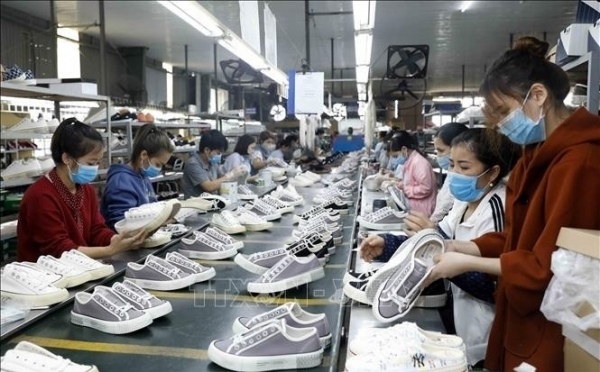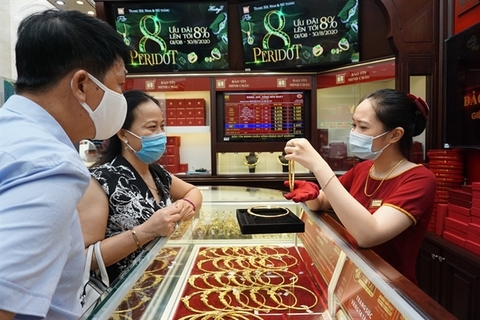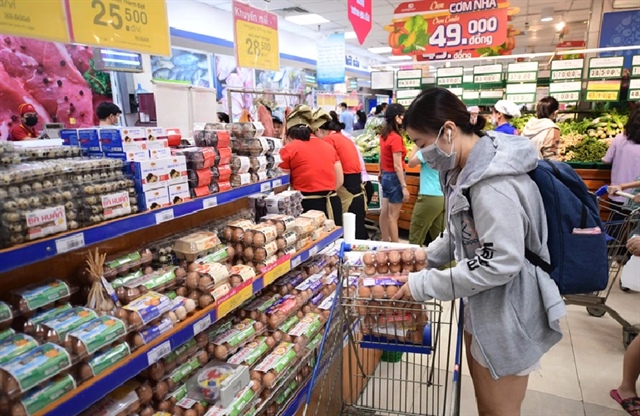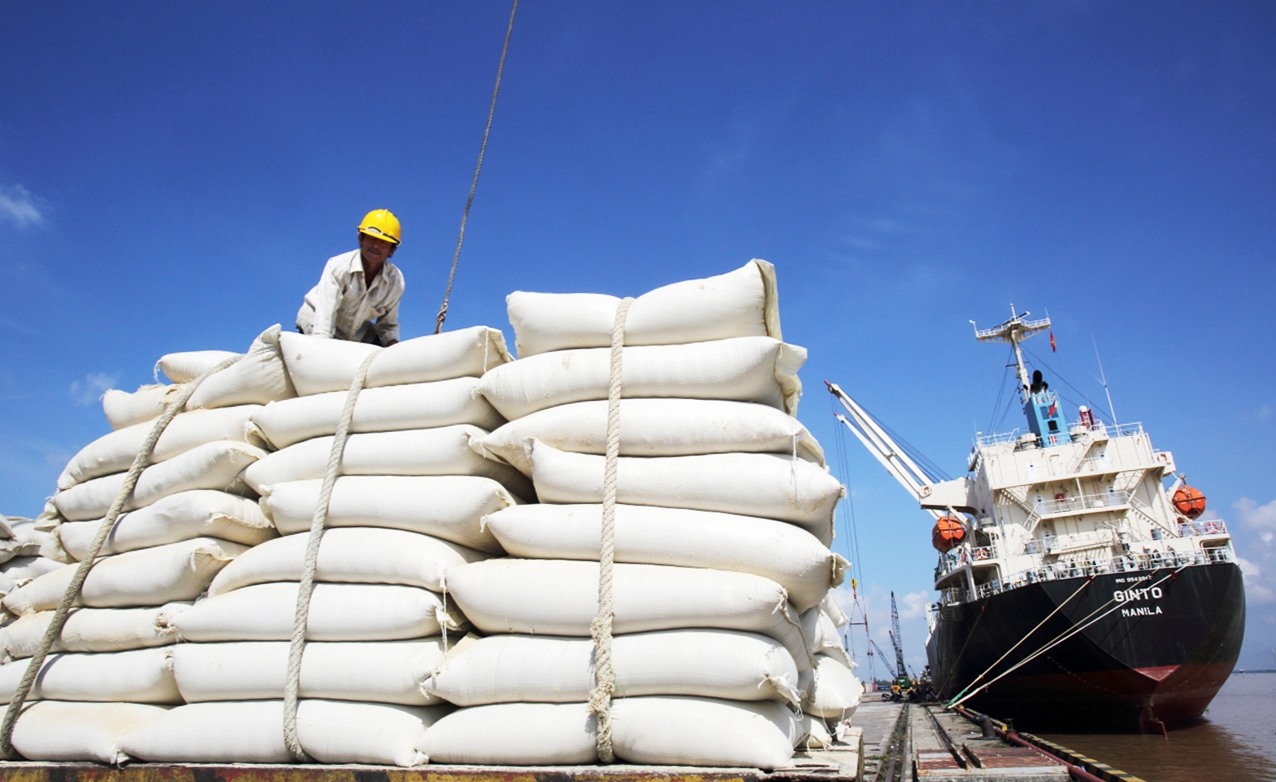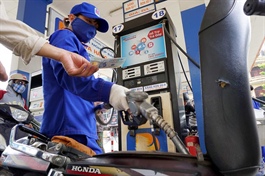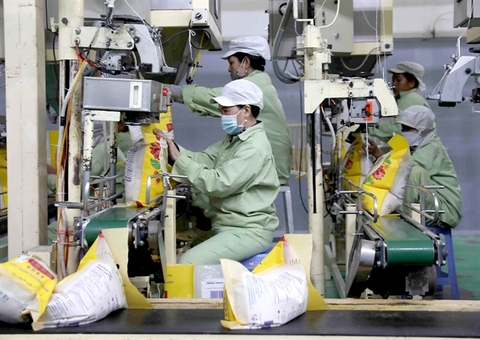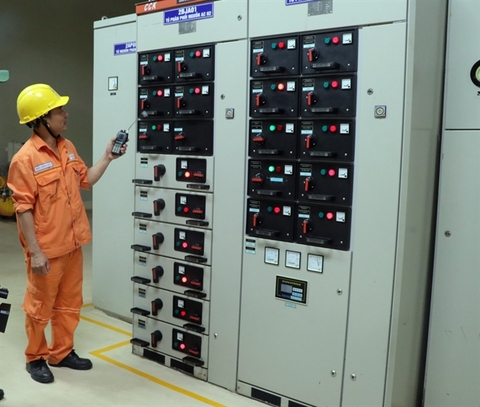Co-processing in cement industry: Norway expertise for Vietnam net-zero target
Co-processing in cement industry: Norway expertise for Vietnam net-zero target
The method helps the cement industry play a more important role in reducing greenhouse gas emissions and preventing plastic waste from ending up in the oceans.
Co-processing of alternative fuels and raw materials in Vietnam's cement industry with experiences from Norway is believed to be part of efforts to support the Southeast Asian country's goal of net zero emissions by 2050.

Participants at the workshop on co-processing of alternative fuels and raw materials in cement industry held in Hanoi on Sept 20. Photos: The Embassy of Norway in Hanoi |
This view was shared at a workshop held in Hanoi on September 29 jointly organized by the Norwegian Embassy in Hanoi, the Norwegian Foundation for Scientific and Industrial Research (SINTEF), UNDP Vietnam, GIZ, UNIDO Vietnam and INSEE (formerly Holcim) in Kien Giang, Vietnam.
At the event, related stakeholders shared international experiences in co-processing of wastes in the cement industry, informing results of using non-recyclable plastic wastes at INSEE plant in Hon Chong, Kien Giang, and discussing the potential for future co-processing in the Vietnamese cement industry.
Addressing the workshop, Mette Møglestue, Deputy Head of Mission, the Norwegian Embassy in Hanoi, said both Norway and Vietnam, as signatories of the Paris Agreement, are strongly committed to combating climate change and implementing our National Determined Contributions (NDCs) to reduce greenhouse gas emissions (GhG).

Mette Møglestue, Deputy Head of Mission, the Norwegian Embassy in Hanoi, speaks at the workshop. |
This requires cross-sector involvement, with the significant role of the academia, private sector, NGOs, and industries in this process. “I am glad that SINTEF’s research findings about using non-recyclable plastic wastes as alternative fuels for the cement kilns have been successfully demonstrated and could be scaled up in Vietnam,” Møglestue said.
“Through the OPTOCE Project funded by the Norwegian Government and being implemented in five Asian countries including Vietnam, we hope that Norway can help Vietnam’s cement industry to improve its capacity to treat non-recyclable plastic wastes, and to contribute to implementing Vietnam’s net-zero target commitment by 2050,” she noted.
The Ocean Plastic Turned into an Opportunity in Circular Economy (OPTOCE) Project, which carries out in five countries: China, India, Myanmar, Thailand and Vietnam, aims to reduce the release of plastic wastes into the ocean by involving local energy-intensive industries in waste management and energy recovery.

Dr. Kåre Helge Karstensen, Chief Scientist from SINTEF. |
Dr. Kåre Helge Karstensen, Chief Scientist from SINTEF who has been heading the OPTOCE Project, said the cement industry requires massive volumes of coal and other raw materials. However, some or all of these could be replaced by non-recyclable plastic waste. Per their research findings, co-processing of non-recyclable plastic waste as a fuel substitute in cement kilns does not increase emissions of dioxins while still complying with the strictest international limit values.
“The successful demonstration of this method in Vietnam at the INSEE plant sends a message of hope about the future of Vietnam’s cement industry,” he said, noting that co-processing in cement kilns can improve the management of non-recyclable plastic waste in Vietnam, reduces coal consumption in the cement industry and lower the need for building expensive WtE (Wastes to Energy) incinerators.

Bruno Fux, Director of INSEE Ecocycle. |
Bruno Fux, Director of INSEE Ecocycle, said they are very happy to be part of OPTOCE’s plan to turn plastic waste into opportunities to develop a circular economy in Vietnam. INSEE Ecocycle Vietnam has been in the co-processing business for the last 15 years. During that time, they have been investing continuously in new equipment in order to expand our waste treatment capability and capacity.
“Our first priority is zero harm to people and the environment. Therefore, experience and expertise are needed, especially when treating hazardous waste,” he said, hoping many of the Vietnamese cement companies would be inspired by the model and become INSEE like-minded friends. “Together, we can reduce the use of fossil fuels such as coal and contribute to a greener and cleaner Vietnam.”
Challenges
However, there exist a number of challenges: investments in co-processing; unavailability of entities specialized in collection and preliminary treatment of wastes for delivery to cement plants; inadequate legal procedures for recognizing plants that adopt waste co-processing as waste treatment facilities; lack of incentives and presential for the co-processing plants or the entities/enterprises in their supply chain.
Dr. Kåre Helge Karstensen said they acknowledge that implementing sound and safe co-processing in the cement industry takes time and will be dependent on many local and national factors and conditions. Therefore, it must be a willingness of local and central governments to support the concept, and there must be a level playing field for all players in the “waste management market.”
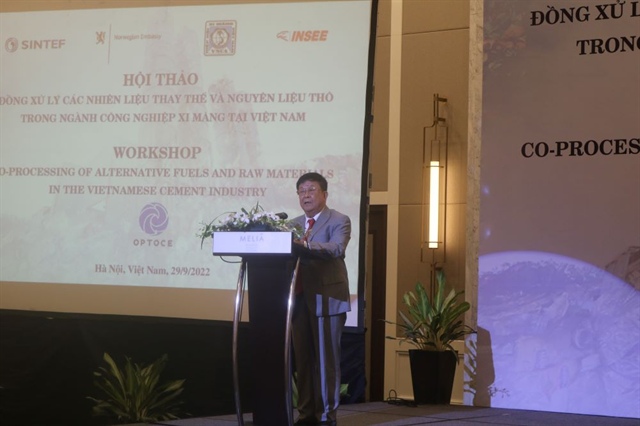
Associate Professor Luong Duc Long, the Vietnam Cement Association (VNCA). |
Opportunity
While co-processing is very popular in Europe and Norway, this is not the case in Vietnam where only a handful of cement plants are currently co-processing wastes. According to Associate Professor Luong Duc Long, the Vietnam Cement Association (VNCA), Vietnam has 82 clinker kilns in operation, which together each year consume over 10 million tons of anthracite coal. The current rate of use of alternative fuels in the whole cement industry remains low.
“The Government of Vietnam has the policy to increase this rate by 15% by 2030 and by 30% after that. Thus, there is a huge potential for co-processing of wastes including non-recyclable plastics in the cement kiln in Vietnam,” he shared.
The workshop provides an effective forum for scientists, managers at both central and local levels, cement companies, entities generating non-recyclable plastic wastes, and NGOs to share information about opportunities and difficulties in the application of co-processing in Vietnam.
All participants share the wish that the Government of Vietnam will soon have an appropriate legal framework that will allow the cement industry to be a partner in improving the management of solid wastes. Besides, it is necessary to ensure a stable and appropriate source of wastes for co-processing, which needs to be mapped out and implemented in the Vietnamese context of collection, transportation, and storage of wastes. Therefore, all kinds of assistance: techniques, facilities, human and physical resources are crucial for the cement companies to soon apply co-processing in Vietnam.



